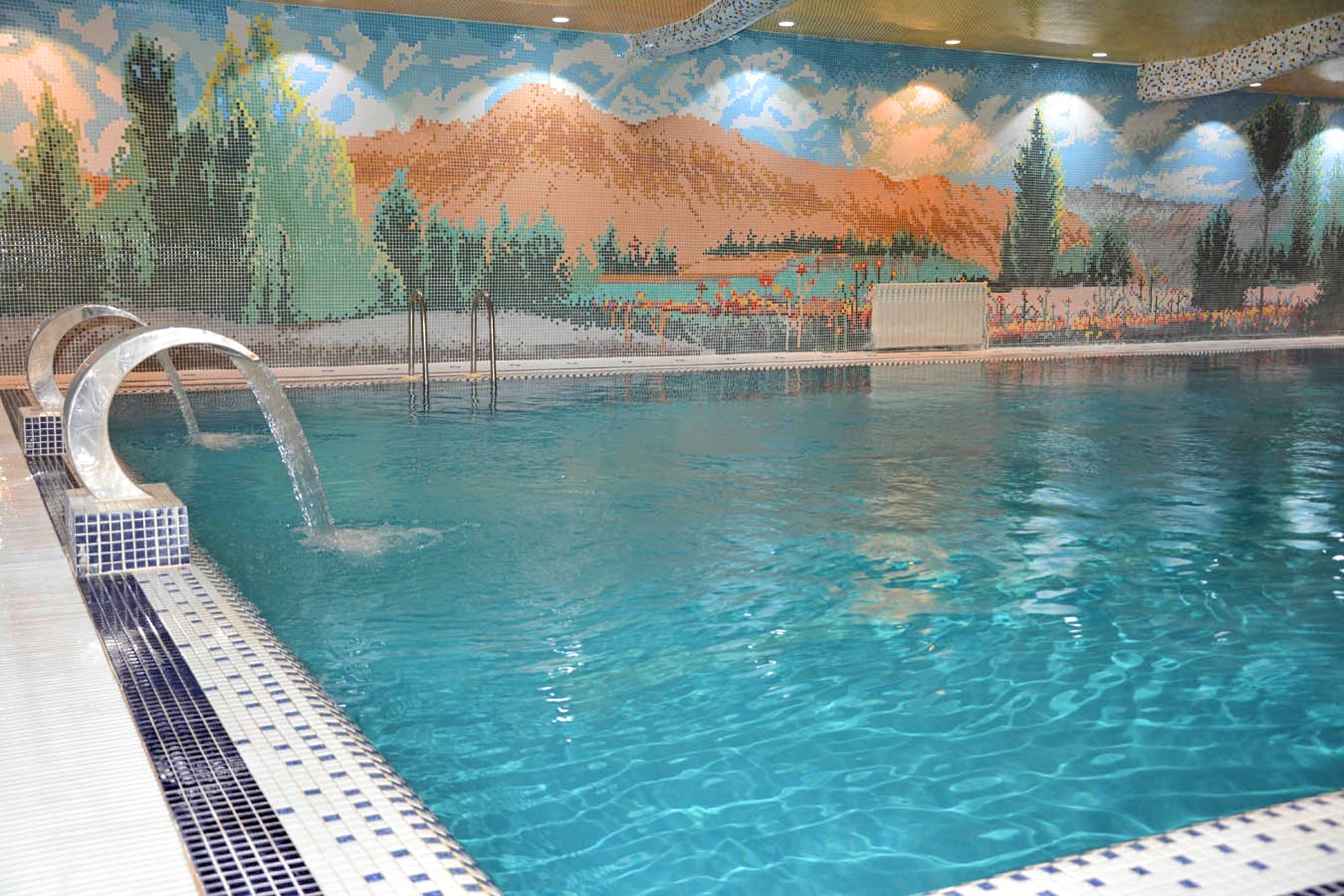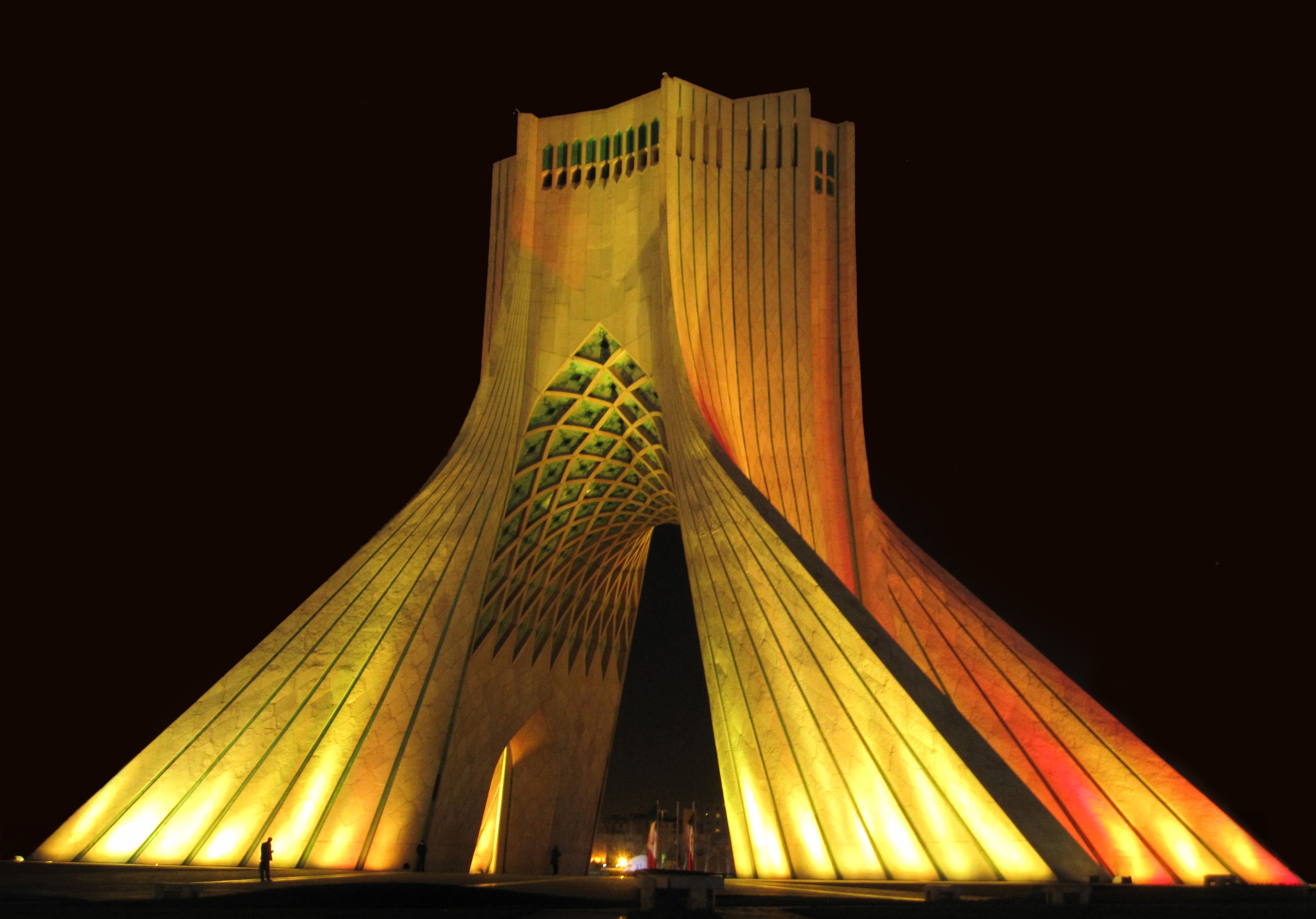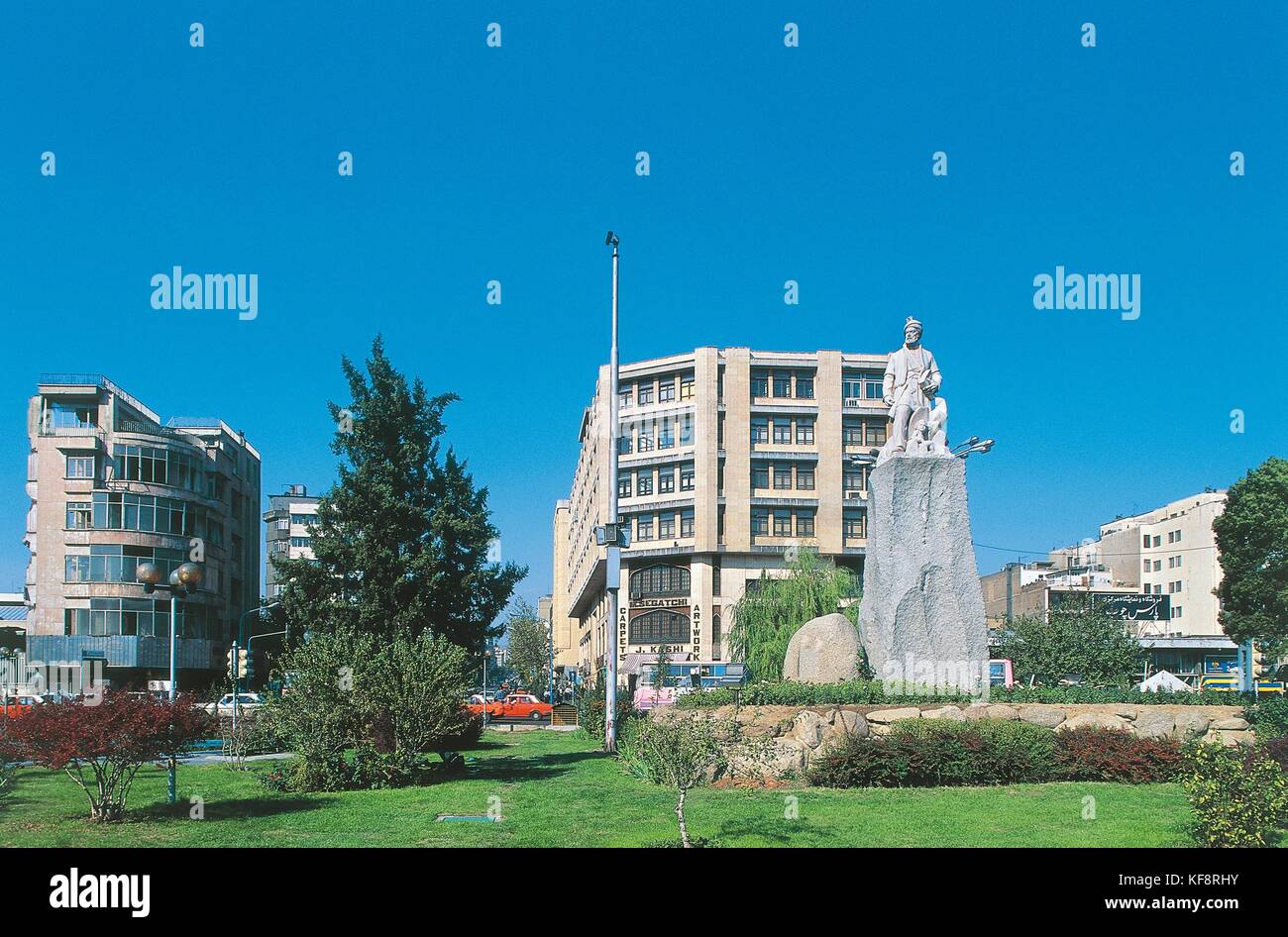Ferdowsi Square Tehran: Heart Of Culture, Commerce, And History
Ferdowsi Square, nestled in the vibrant heart of Tehran, Iran, is far more than just a traffic intersection; it is a pulsating nexus where the city's rich history, dynamic economy, and daily life converge. Named after the revered Persian epic poet, Ferdowsi, this iconic square serves as a crucial landmark, a bustling commercial hub, and a gateway to some of Tehran's most significant cultural institutions. Its strategic location and historical depth make Ferdowsi Square an indispensable point of interest for both locals and visitors seeking to understand the true essence of the Iranian capital.
From its origins as Alaoddowleh Street to its current prominence as the epicenter of Tehran’s currency exchange trade, Ferdowsi Square embodies the city's continuous evolution. The area around the square, particularly Ferdowsi Street, is a testament to Tehran's diverse character, housing diplomatic missions, historical banks, and world-class museums. This article delves into the multifaceted significance of Ferdowsi Square, exploring its historical roots, economic importance, cultural landmarks, and its enduring appeal as a vibrant urban space.
Table of Contents
- The Historical Tapestry of Ferdowsi Square
- Ferdowsi Square: Tehran's Economic Pulse
- A Diplomatic Corridor: Embassies Near Ferdowsi Square
- Cultural Gems and Museums Around Ferdowsi Square
- Accommodations and Hospitality: Hotels Near Ferdowsi Square
- Urban Connections and Accessibility
- Exploring Nearby Landmarks and Attractions
- Safety and Atmosphere in a Bustling Hub
- Conclusion: The Enduring Legacy of Ferdowsi Square
The Historical Tapestry of Ferdowsi Square
Ferdowsi Square, and the street that bears its name, Ferdowsi Street (Persian: خیابان فردوسی), holds a significant place in Tehran's urban history. Originally known as Alaodowleh Street or Alaoddowleh Street (خیابان علاءالدوله), its renaming to Ferdowsi Street was a tribute to Abolqasem Ferdowsi, the highly esteemed Persian poet who authored the epic masterpiece, the Shahnameh (Book of Kings). This renaming reflects Iran's deep respect for its cultural heritage and literary giants, placing a symbolic anchor of national identity right at the city's core. The street itself, which culminates at Ferdowsi Square in the north, begins its journey from Toopkhane Square (also known as Imam Khomeini Square) in the south. Along its path, it gracefully passes through the bustling Istanbul Intersection, a testament to the city's intricate urban planning and historical layers. This historical trajectory means that Ferdowsi Square has witnessed countless transformations, from the horse-drawn carriages of yesteryear to the modern traffic and vibrant crowds of today. Its evolution mirrors the growth and modernization of Tehran itself, making it a living archive of the city's past and present. The square has always been a point of convergence, a place where people from different walks of life meet, trade, and interact, solidifying its role as a historical and social anchor in Tehran.Ferdowsi Square: Tehran's Economic Pulse
Beyond its historical and cultural significance, Ferdowsi Square is unequivocally recognized as the economic heart of Tehran, particularly when it comes to financial transactions. The area surrounding Ferdowsi Square is famously known as the center of Tehran’s currency exchange trade, a reputation it has held for decades. This economic vibrancy is palpable, with a constant flow of individuals and businesses engaged in various financial dealings.The Currency Exchange Hub
The streets and alleys around Ferdowsi Square are dotted with numerous currency exchange bureaus. This concentration makes it the primary destination for anyone looking to exchange foreign currency, whether for international travel, business transactions, or personal investments. The sight of a currency exchange bureau worker meticulously counting U.S. dollars or a street money exchanger discreetly handling transactions without showing their face is a common, almost iconic, scene in this district. This informal and formal network of exchangers creates a dynamic and sometimes frenetic atmosphere, reflecting the pulse of Iran's economy. The constant demand and supply of various currencies contribute to the square's reputation as the go-to place for real-time exchange rates and quick transactions. For both locals and tourists, understanding the dynamics of this currency hub is essential when navigating financial matters in Tehran.Prominent Banking Institutions
Complementing the bustling currency exchange market, Ferdowsi Street and its immediate vicinity also host several significant banking institutions that underscore its financial importance. The grand buildings of the National Bank of Iran (Bank Melli Iran) and Bank Sepah are prominent fixtures on this avenue. These banks are not just architectural landmarks; they are pillars of Iran's financial system, offering a wide range of services from retail banking to corporate finance. Their presence reinforces Ferdowsi Square's status as a central financial district, attracting businesses and individuals seeking secure and reliable banking services. The blend of traditional banking and the informal currency market creates a unique economic ecosystem that defines this part of Tehran.A Diplomatic Corridor: Embassies Near Ferdowsi Square
Ferdowsi Square's strategic location extends beyond its commercial and historical significance to its role as a diplomatic hub. The area is home to several foreign embassies, highlighting its importance in international relations and its central position within the capital. This concentration of diplomatic missions adds another layer of gravitas and international flair to the bustling district. One of the most notable diplomatic presences is the Embassy of the United Kingdom in Tehran. This significant diplomatic mission of the United Kingdom to the Islamic Republic of Iran is conveniently located at 172 Ferdowsi Avenue. Situated approximately 170 meters northwest of Ferdowsi Square, its proximity makes the square a recognizable landmark for those navigating to or from the embassy. The presence of such a high-profile embassy underscores the area's security importance and its role as a point of contact for international affairs. In addition to the British Embassy, Ferdowsi Street and its surrounding areas host other crucial diplomatic representations. The Embassies of Germany and Turkey are also located on this avenue, further solidifying Ferdowsi Square's reputation as a diplomatic corridor. This cluster of embassies means that the area is frequented by foreign diplomats, international visitors, and Iranians engaged in global affairs, contributing to the diverse and cosmopolitan atmosphere of the square. The presence of these diplomatic entities is a testament to Ferdowsi Square's central and accessible location, making it an ideal spot for international engagement and representation in Tehran.Cultural Gems and Museums Around Ferdowsi Square
Ferdowsi Square is not just a commercial and diplomatic center; it is also a gateway to some of Tehran's most fascinating cultural institutions and historical sites. The area around the square is a treasure trove for those interested in Iranian history, art, and heritage, offering a rich tapestry of experiences for curious minds.National Jewels Museum
One of the most spectacular attractions near Ferdowsi Square is the National Jewels Museum, housed within the Central Bank of Iran. This museum boasts an unparalleled collection of precious gemstones, crowns, and imperial jewelry, showcasing the opulent history of Persian monarchies. The sheer brilliance and historical significance of items like the Darya-ye Noor diamond, the Naderi Throne, and the Kiani Crown draw visitors from all over the world. Its proximity to Ferdowsi Square makes it an easily accessible must-see for anyone exploring the city center. The museum's existence within a major financial institution further intertwines the themes of wealth, history, and national identity that permeate the Ferdowsi Square area.Bank Sepah’s Coin Museum
Another intriguing cultural site located on Ferdowsi Avenue is Bank Sepah’s Coin Museum. This specialized museum offers a fascinating journey through the history of Iranian coinage, from ancient times to the modern era. Visitors can explore a vast collection of coins, banknotes, and monetary artifacts, gaining insights into the economic and political history of Iran through its currency. The museum provides a unique perspective on the evolution of trade, power, and art in the region. Its presence near the currency exchange hub of Ferdowsi Square is particularly fitting, creating a direct link between the historical context of money and its contemporary exchange. These museums, along with other cultural landmarks, enrich the experience of visiting Ferdowsi Square, offering a blend of commerce, history, and art. Beyond these major museums, the area also features other points of cultural interest. For instance, the Greek Orthodox Church of Saint Mary, also known as the Greek Orthodox Church of the Annunciation of the Mother of God, is located within an 8-minute walk from Ferdowsi Square. This religious site adds to the diverse cultural fabric of the neighborhood, showcasing the presence of various communities and their historical roots in Tehran. The proximity of such varied institutions—from ancient jewels to a Greek Orthodox church—underscores Ferdowsi Square's role as a microcosm of Tehran's rich and multifaceted identity.Accommodations and Hospitality: Hotels Near Ferdowsi Square
Given its central location and proximity to major attractions, Ferdowsi Square is a highly desirable area for travelers seeking accommodation in Tehran. The vicinity offers a range of hotels, catering to different preferences and budgets, all benefiting from the square's excellent connectivity and access to key sites. One of the most prominent hotels in the area is the Ferdowsi International Grand Hotel. This hotel is strategically located in a historical neighborhood right in the center of Tehran. Its strong suits, as frequently highlighted by TripAdvisor reviewers, include its exceptional proximity to major historical and cultural landmarks. Guests often mention its convenience to Bagh Meli (National Garden), the National Museum of Iran, the magnificent Golestan Palace, and various metro stations. This makes it an ideal base for tourists keen on exploring Tehran's rich heritage without extensive travel. The hotel itself, often described in Persian as Ferdowsi Grand Hotel, aims to provide a comfortable and culturally immersive experience for its guests. Another option for travelers is the Nour Hayat Hotel. While perhaps not as grand as the Ferdowsi International Grand Hotel, it still garners positive attention from travelers. According to TripAdvisor reviews, Nour Hayat Hotel has been ranked #45 of 71 hotels in Tehran and rated 4 out of 5, based on traveler reviews and candid photos. This indicates a respectable level of service and guest satisfaction. The availability of multiple hotels, from grand establishments to more modest but well-regarded options, ensures that visitors to Ferdowsi Square can find suitable lodging that enhances their exploration of Tehran. The convenience of staying near Ferdowsi Square cannot be overstated, as it places guests at the nexus of the city's public transport network, financial services, and cultural hotspots.Urban Connections and Accessibility
Ferdowsi Square's importance is significantly amplified by its superb urban connectivity. As a major junction, it serves as a critical node in Tehran's extensive public transportation network, making it highly accessible from virtually any part of the city. This accessibility is a key factor in its role as a bustling commercial and cultural center. The square is well-served by Tehran's metro system, with nearby metro stations providing efficient and affordable transport options. This allows both locals and tourists to easily reach Ferdowsi Square and then branch out to explore the surrounding areas or connect to other parts of the city. The metro's convenience is often cited by travelers staying at hotels like the Ferdowsi International Grand Hotel, as it provides seamless access to a multitude of attractions. Furthermore, Ferdowsi Street itself plays a vital role in connecting different parts of central Tehran. Running from Toopkhane in the south and culminating at Ferdowsi Square in the north, it acts as a major artery. This street's flow, passing through the Istanbul intersection, ensures that traffic and pedestrian movement are constantly channeled towards and through the square. This constant flow of people and vehicles underscores its central position in Tehran's urban fabric. The ease of reaching Ferdowsi Square, whether by metro, bus, or taxi, makes it a natural meeting point and a convenient starting point for exploring Tehran's many facets. Its robust urban connections are integral to its sustained vibrancy and enduring relevance in the city.Exploring Nearby Landmarks and Attractions
The area surrounding Ferdowsi Square is rich with landmarks and attractions that extend beyond its immediate vicinity, offering visitors a broader scope of Tehran's diverse character. These nearby points of interest contribute to the square's appeal as a central hub for exploration. Just a short distance from Ferdowsi Square, approximately 3 kilometers southeast, lies Takhti Stadium. This multi-purpose stadium is a significant sports venue in Tehran, often hosting football matches and other athletic events. While not directly adjacent, its relative proximity means that Ferdowsi Square can serve as a convenient point for fans or athletes traveling to and from the stadium, connecting the city's sporting life to its commercial and cultural heart. Beyond the immediate urban landscape, the square's central location places it within reasonable reach of other important Tehran neighborhoods and areas. Although not directly next to Ferdowsi Square, areas like Keshavarz Boulevard, Valiasr Street, Jannat Abad, Tehran Pars, and Niavaran are all significant parts of Tehran, each with its own unique character and attractions. The incidents of explosions heard near Ferdowsi Square, Sepahbod Gharani Street, Taleghani Junction, Palestine Square, and the Sadeghiyeh and Chitgar neighborhoods, as reported by Tasnim, highlight the square's central position within the city's broader geography, making it a reference point even for events occurring elsewhere in Tehran. This underscores the square's role as a recognizable and central landmark within the city's vast expanse. For those interested in unique finds, the global marketplace sometimes features items related to Ferdowsi Square. Postcards depicting Ferdowsi Square, Tehran, Iran, or those related to Iran International Fairs, can be found online, offering a tangible piece of its history and cultural representation. This speaks to the square's iconic status, making it a subject of art and memorabilia that transcends geographical boundaries. Whether one is seeking historical sites, cultural experiences, or simply navigating the city, Ferdowsi Square serves as an excellent starting point for exploring the myriad attractions Tehran has to offer.Safety and Atmosphere in a Bustling Hub
When visiting any major urban center, understanding the local atmosphere and general safety is crucial for a pleasant experience. Ferdowsi Square, as a bustling economic and cultural hub, presents a vibrant and dynamic environment that is generally safe for visitors, albeit with the usual precautions one would take in any large city. The constant flow of people, from currency exchangers and bankers to tourists and local shoppers, creates a lively and energetic atmosphere. The presence of diplomatic missions, major banks, and well-known hotels also contributes to a generally secure environment, as these areas often have increased surveillance and security measures. The vibrant street life, with vendors, cafes, and pedestrians, means there are always eyes on the street, which can deter petty crime. However, like any busy financial district, visitors should exercise common sense precautions. This includes being mindful of personal belongings, especially in crowded areas like the currency exchange market where transactions involve significant amounts of cash. While street money exchangers are a common sight, it's generally advisable for tourists to use official exchange bureaus to ensure legitimate transactions and fair rates. The occasional reports of incidents, such as explosions heard near Ferdowsi Square, are isolated events that, while serious, do not define the everyday safety or atmosphere of the square. Tehran, like many major cities, has its challenges, but the general experience of visiting Ferdowsi Square is one of a vibrant, active, and welcoming urban space. Engaging with locals, observing the daily rhythm, and being aware of one's surroundings will contribute to a safe and enriching visit to this iconic Tehran landmark.Conclusion: The Enduring Legacy of Ferdowsi Square
Ferdowsi Square, Tehran, stands as a multifaceted emblem of Iran's capital, seamlessly weaving together threads of history, commerce, culture, and diplomacy. From its origins as Alaoddowleh Street to its current identity as a vibrant economic and cultural nexus, the square embodies the dynamic spirit of Tehran. It is not merely a geographical point but a living testament to the city's continuous evolution, a place where the past informs the present, and the future is shaped by daily interactions. As the undisputed center of Tehran's currency exchange trade, Ferdowsi Square plays a pivotal role in the nation's economy, reflecting the ebb and flow of its financial landscape. Its strategic location, flanked by major diplomatic missions like the UK, German, and Turkish Embassies, underscores its international significance. Furthermore, the presence of esteemed institutions such as the National Bank of Iran and Bank Sepah, alongside world-class museums like the National Jewels Museum and Bank Sepah’s Coin Museum, solidifies its status as a cultural and historical treasure trove. For travelers, Ferdowsi Square offers unparalleled accessibility and a gateway to exploring Tehran's most cherished landmarks, with hotels like the Ferdowsi International Grand Hotel providing convenient and comfortable stays. Its urban connections ensure that every corner of Tehran is within reach, making it an ideal starting point for any city adventure. In essence, Ferdowsi Square is a microcosm of Tehran itself – a city of contrasts, where ancient heritage coexists with modern dynamism, and bustling commerce thrives alongside profound cultural depth. We invite you to experience the unique energy of Ferdowsi Square on your next visit to Tehran. Share your thoughts and experiences in the comments below, or explore our other articles to discover more hidden gems of Iran!
Book Ferdowsi International Grand Hotel in Tehran - Best Price

Iran, Tehran, City, Azadi Square HD Wallpapers / Desktop and Mobile

Iran, Tehran. Ferdowsi Square with the monument to the Persian poet